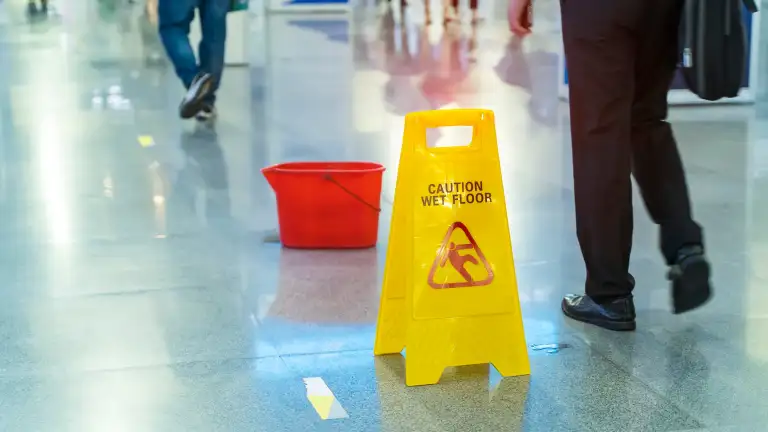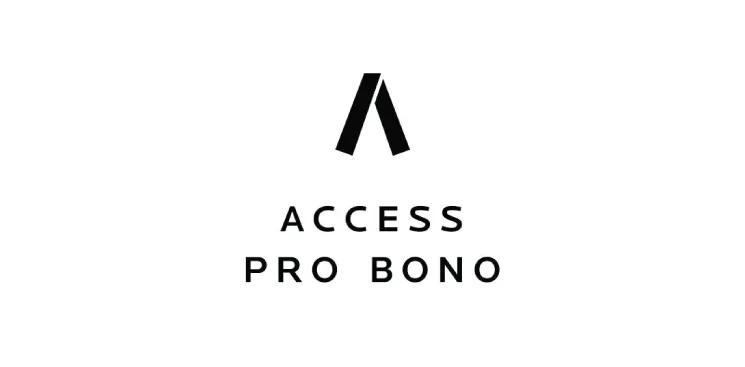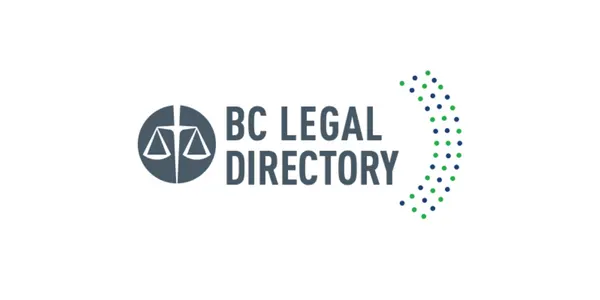
If you slip and fall on a wet floor at your local grocery store and are injured, the store is automatically responsible.
Does this sound familiar: While dining out, you slip and fall on something spilled on the restaurant floor. Bruised and upset, you limp off to find the person in charge. Learn about the law in this type of situation, and what you can do if you’re injured after a slip and fall.
What you should know
“Before the start of my Zumba class, I noticed a puddle on the floor. I told the instructor. She said she'd ask the cleaning staff to take care of it. Then two other participants cornered her with questions, and it was time for class to start. When a friend of mine arrived late, she slipped and fell on the wet floor. No one had come to clean it up. My friend hurt her back and sprained her wrist.”
– Neena, Prince George, BC

Slips and falls are all too common — whether in a store or business, in someone’s home, or on an uneven neighborhood sidewalk. Most of the time, we’re able to get up, walk away, and forget about it.
Sometimes, though, serious injuries can result. They can impact our lives for a long time — even permanently. In fact, accidental falls are the main cause of injury-related hospitalizations. Injuries can range from cuts and bruises to sprained ankles or wrists, broken bones, or brain or spinal cord injuries. There can also be a huge psychological impact, especially if the injuries lead to a lower quality of life.
Slips, trips, and falls often happen because of unsafe conditions on someone else’s property. Examples of hazards lying in wait include:
loose or uneven carpeting or rugs
loose or stray wires on the ground
wet, waxed or otherwise slippery floors
cluttered walkways
missing or loose handrails on stairs
uneven ground or pavement (due to cracks or potholes, for example)
icy, snowy stairs or sidewalks that haven’t been salted or shovelled
dim or inadequate lighting
In BC, if you’re injured after a slip and fall because of the dangerous condition of someone’s property, you can look to the law for guidance. Under this BC law, someone who owns, leases, or is otherwise an occupier of a property has to make sure you’re reasonably safe while you’re on the property.
Who an occupier is
Let’s say you slip on a wet floor of a grocery store that rents its space. Under this law, the store is an occupier, as they are in physical possession of the premises.
The owner of the premises may also be an occupier. It depends on if they have responsibility for and control over the premises — specifically, over its condition, the activities that happen there, and the people who are allowed to enter. What the lease says will be decisive here, as it was in this case where a property owner was found not to be an occupier.
So to recap: an occupier is a person or business who physically possesses a building or land. An occupier can also be someone with the right kind of responsibility for and control over a property.
An occupier’s duty of care
An occupier is responsible for keeping you reasonably safe while in their building or on their grounds. This is called the occupier’s duty of care.
Whether you’re shopping at a store, dining at a restaurant, or visiting a friend’s home, the occupier has a duty to make sure you won’t be injured by something unsafe you encounter there. They have to, for example, keep the floors dry and clear of debris so you don’t slip and get hurt.
But an occupier doesn’t have to aim for perfection. They don’t have to take every conceivable step to protect against all risks of harm. Think of it this way: an occupier can’t always be present and responsible for immediately picking up debris or cleaning up a slippery mess. The law says they have to take reasonable steps to keep others safe while on their property.
Reasonable actions are ones that are accepted as normal and appropriate. They’re the kinds of actions other occupiers would take in similar circumstances. Examples include:
having a regular system in place for cleaning, maintaining, and inspecting the property
putting up signs to warn about any hazards
If an occupier doesn’t maintain their property, or fix or warn you about a problem, they could be at fault for your injury.
Who the occupier owes a duty of care to
The occupier’s duty of care applies to people who have permission to be on the property. It doesn’t apply to everyone who enters the property. An occupier has lower levels of responsibility in these situations:
An occupier has a lower standard of responsibility to someone who has willingly assumed the risks of being on the property. This includes someone who has permission to be on the property but is there for their own purposes — like a sales agent.
An occupier has no responsibility to someone who is trespassing on the property and committing, or intending to commit, a crime (except they can’t intentionally injure the trespasser).
If you’ve been injured in a slip and fall on someone’s property, you can’t assume they’re at fault — even if their property was in an unsafe condition. You have to prove the owner or occupier owed you a duty of care and is legally responsible for your fall.
What you must show
To prove liability, you have to show:
there was a hazard on the property or the property was in an unsafe condition,
the occupier knew or should reasonably have known about the hazard or unsafe condition,
they didn’t take reasonable steps to fix the problem or maintain the property, and
you were injured because of their negligence.
Here are a couple of examples. An owner of a busy grocery store was found responsible for the injuries of a customer who slipped on spilled laundry soap that wasn’t mopped up for some time (see here). And a homeowner was responsible for the injuries to a visitor who slipped going down stairs outside the home that hadn’t been painted in over four years and so were highly slippery in cold weather (see here).
Some more examples
For more on how responsibility for slips and falls can play out, see examples of when a person slips and falls at someone’s home, in a business, or on a city sidewalk.
When an occupier may not be liable
If you slip and fall on someone’s premises, they can point to a number of factors to argue they shouldn’t be responsible. For example, they might say:
they have a reasonable system in place, which they follow, for cleaning, maintaining, and inspecting the property to keep it safe for users
they displayed clear and visible warning signs about any hazards
they put up tape, rope, or other barriers around any hazards
These factors won’t necessarily get an occupier off the hook. But a court would consider them in deciding whether the occupier took reasonable steps to keep you and others safe on their property.
When you may be found partly at fault
You’re responsible for taking care as you move about on a daily basis. If you don’t, you could be found to have contributed to any injuries you suffer in a slip and fall. In arguing a fall was your fault, or partly your fault, an occupier might say:
you weren’t watching where you were going
you saw or knew about the unsafe condition or hazard and proceeded anyway
your footwear was inappropriate
On that latter point, here’s an example of where a person’s poor choice of footwear was found to contribute to her fall on some icy stairs outside her apartment. The result was that she was found mostly at fault for her accident.
If you are partly at fault for your injuries, it affects the damages you can get. For example, in a legal action, if a court found you were 50% responsible for the slip and fall, they would cut any damage award in half.
“Outside my doctor’s office is a long staircase. As I went up the stairs, I was checking my text messages. My high heel caught in a crack in one of the steps, and I slipped and fell, breaking my leg. A lawyer told me I’d likely be found partly at fault — in part because I wasn’t paying attention and also because of my footwear. If I bring a lawsuit and a court finds me half responsible for my injuries, that means I’d only get half of any damage award.”
– Jordana, Maple Ridge, BC

If you’ve been injured in a slip and fall, you may be wondering what kind of money you might be able to get. If another person is legally at fault for your injuries, you can be paid damages for your losses. This involves figuring out what your injuries have cost you monetarily, physically, and mentally. In some cases, damages also punish the other party for their conduct.
You can negotiate with the other party to try to agree on an amount of damages. Or you can bring a legal action, seeking to have damages awarded by a court.
The types of damages
Most damages in a slip and fall case are to compensate you for what was lost due to the accident or injury. The guiding principle is to restore you to the position you would have been in but for the accident. This involves trying to put a dollar figure on the consequences of an accident, which is no small task.
Some damages are relatively easy to quantify — like reimbursing property damage or medical bills. But it's harder to place a monetary value on pain and suffering or the inability to enjoy hobbies because of physical limitations caused by lingering accident-related injuries.
Here are some types of damages that can come into play:
Pain and suffering. These damages, called non-pecuniary damages, are to compensate an injured person for pain, suffering, loss of enjoyment of life, and loss of amenities.
Income. An injured person can be compensated for the accident's impact on their wages — including income they’ve already lost and also for loss of earning capacity (income they would have been able to make in the future if the accident hadn’t happened).
Special damages. These are out-of-pocket expenses for treatments, medications, and so on.
Cost of future care. These damages are for the cost of treatments in the future, after any settlement or trial.
Age may make a difference
Where an injured person is older, they may be entitled to more money. But it’s not a sure thing. Some courts in BC have made higher non-pecuniary damage awards to older people on the basis that an injury may have a greater impact on an older person, whose activities are already constrained by age, than on a younger person. Cases applying this golden years doctrine include this one and this one.
However, other BC cases have actually reduced the non-pecuniary damage award on the basis that an elderly person will not have as long to live.
Yet other cases (like this one) have opted for an in-between approach, saying the competing considerations may balance each other out.
Work out the problem
Select the steps that make sense in your situation
If you slip and fall and are injured, you don’t have to go through the steps in order. Choose the steps and sequence that best fit your situation.
After you’ve dusted yourself off and taken care of your injuries, document the accident as best you can, as soon as you can.
Take photos. Take photos or a video of your injuries, your clothing and footwear, any hazard that caused your fall, and the general scene where the slip and fall occurred.
Make detailed notes. Write down the time and location of your fall, and details about how it happened. Describe your injuries and any damage to your property (such as broken eyeglasses or ripped clothing).
Talk to any witnesses. If someone witnessed the incident, get their name and contact information. Ask them to give you a written statement of what they saw and heard. If they took a video, ask them to share it with you.
Stay organized. Keep your notes and other evidence in one place, like in a file folder or on your phone.
Look for the property owner or someone in charge of the premises. Tell them what happened so they can clean up or fix any hazard. Ask for their name and contact information for your records. If the fall happened at a business, fill out an incident report (the business should have a process around this). Ask for a copy of whatever you fill out, or take a photo of it.
If you slipped and fell on public property, you need to report it in writing to the municipality within two months. For details, see this question about a slip and fall on a city sidewalk.
Don’t share information about your fall on social media
You may be tempted to share information about your fall and injuries on social media. But it could later be used against you, so it’s best not to.
Within 24 hours (or as soon as possible) after a slip and fall, you should see a medical professional — even if you feel okay. Your injury may be more serious than you think.
It’s ideal if you can visit your doctor, as they know your medical history. Otherwise, go to a hospital or clinic. The medical professional can document your injuries, treatment, and prognosis.
Continue seeing your doctor, and any other health care provider you’re referred to (such as a physiotherapist or a massage therapist). Follow their recommendations as best you can.
The importance of your medical records
Your medical records will play a critical role in proving the slip and fall caused your injuries. They’re also key in showing the severity and duration of your injuries, and how they impact your life. All this will affect the damages you might get.
After a slip and fall injury, keep a daily written record or pain journal. In it, describe your injuries and the location of the pain, as well as the impact of your injuries on your daily activities. Also note any medication you’re taking and any treatments you’re receiving.
Keep this kind of journal until you recover from your injuries. It helps show how your injuries affected your life and for how long.
You should seriously consider contacting a lawyer and explaining what happened — especially if you’ve been seriously injured.
A lawyer can explain your legal options. They’ll also tell you how long you have to take certain steps. For example, if you slipped and fell on public property, you need to report it in writing to the municipality within two months.
Many personal injury lawyers will take slip and fall cases on a contingency fee basis. This means you don’t have to pay any legal fees during the case. Instead, any fees are paid based on an agreed-on percentage of the money they recover for you. You do have to pay out-of-pocket expenses (such as for medical records, long-distance calls, and so on). In a slip and fall personal injury case, the maximum contingency fee percentage is 40%.
See below under who can help for options for legal advice.
If you’ve been hurt after a slip and fall, you may decide to bring a legal action against the occupier. If you (or a lawyer you’ve hired) can prove your claim, you may be able to get a damage award to cover your medical costs, out-of-pocket costs, any lost income, and pain and suffering resulting from the injury.
If your claim is for less than $5,000, you can bring it to the Civil Resolution Tribunal. This online system encourages a collaborative approach to resolving disputes.
If your claim is between $5,000 and $35,000, you can bring a legal action in Small Claims Court. This is faster and less complicated than suing in the British Columbia Supreme Court. But if your claim is for over $35,000, you’ll need to start a court action in BC Supreme Court.
While your legal action against the occupier is ongoing, you (or a lawyer you’ve hired) can try resolving the matter through mediation. This involves meeting with a neutral third party (a mediator). They’ll work to help you and the other party reach an agreement. Mediation is often much quicker and less expensive than legal action.
Finding a mediator
You can search for a mediator based on the community you live in and the type of matter you have. On the ADR Institute website or the Mediate BC website, select personal injury for the area of expertise or practice.
Common questions
Generally speaking, you have a two-year window to bring a legal action arising from a slip and fall. This limitation period, as it’s called, starts to run once you discover your legal claim. A claim is said to be discovered on the first day you knew, or reasonably ought to have known, that you suffered an injury that was caused by the party you’re suing.
If you slipped and fell on public property (such as a sidewalk), the time limit to take action is much shorter. You have to notify the municipality in writing about your fall within two months. To start a legal action for negligence against the municipality, the two-year limitation period applies.
For more on how limitation periods work, see this page on starting a lawsuit.
Slips and falls are very common. Despite this, there are things you can do to stay safe, including:
slow down and watch where you’re walking or running
wear footwear appropriate to your environment
ensure your shoes fit well and have good tread
use handrails along stairs, grab bars in bathrooms, and any mobility devices required
wear any corrective lenses required
walk in areas where there’s enough light to see where you’re going
Who can help

Access Pro Bono's Free Legal Advice
Volunteer lawyers provide 30 minutes of free legal advice to people with low or modest income.

Access Pro Bono’s Everyone Legal Clinic
Clinicians provide affordable fixed-fee services on a range of everyday legal problems.

Lawyer Referral Service
Helps you connect with a lawyer for a complimentary 15-minute consult to see if you want to hire them.

BC Legal Directory
Search for a lawyer by community or legal issue. From the Canadian Bar Association, BC Branch.

